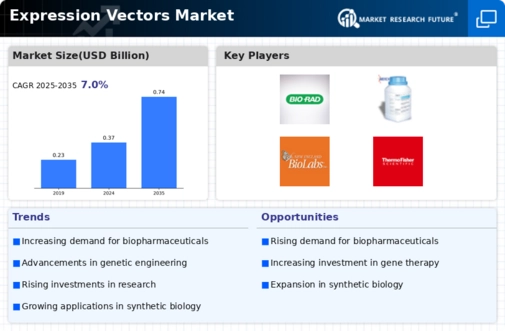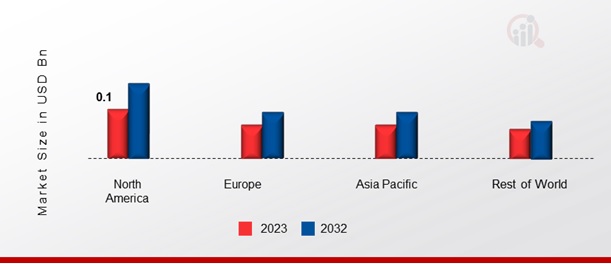Growing frequency of genetic abnormalities and chronic diseases is driving the market growth
Both generative expression vectors require and accept as a response to the accelerating frequency of genetic disorders as well as chronic diseases. Besides, the World Health Organization's (WHO's) 2021 report reveals that non-communicable diseases (NCDs) are the cause of 41 million deaths every year, which accounts for 71% of all the deaths that occur. Non-communicable disease is found to be the cause of the death of approximately 15 million people between the age group of 30 and 69. Moreover, respiratory illnesses (4. 1 million), diabetes (1. 5 million), malignancies (9.
Non-infectious diseases ranked high on the list of death-causing factors, such as cancer (9. 6 million), followed by cardiovascular diseases (17. 9 million), took up the lion's share of non-communicated diseases each year. It is foreseen that the increasing number of non-communicable disease patients will create a demand for biologics; thus, biologics will be used for chronic illness treatment. In the course of treating numerous medical conditions, biologics vectors have proven to be quite important. These vectors provide viable ways to cure diseases at the genetic level by acting as carriers of therapeutic genes into target cells.
Customizable expression vectors that may effectively transport therapeutic payloads to particular cell types while minimizing off-target effects are becoming more and more necessary as the emphasis on precision medicine and tailored therapeutics grows. The market CAGR is expanding as a result of the innovation in vector design and distribution systems that this need has sparked.
Besides, biopharmaceuticals are drugs believed to come from living things or their parts. Among them, vaccines, hormones, cytokines, monoclonal antibodies, and recombinant proteins are included. Different from traditional small molecule drugs, biopharmaceuticals are often made with expression systems that contribute to the genetic modification of host cells and result in the production of desired therapeutic proteins. Biopharmaceuticals, "monoclonal antibodies," are quite widely applied to treat various conditions, for example, infectious diseases, autoimmune diseases, or cancer. Mammalian cell expression systems of CHO cells are the most conventional media used in the formulation of monoclonal antibodies.
These cells have to take up expression vectors and this process needs to be very efficient. Furthermore, as regards the rules concerning public funds, drug pricing, and intellectual property, the States stimulate biopharmaceutical innovation more than any other country. The Indian biotechnology sector is anticipated to have a valuation of over USD 92 billion by 2023, indicating a 15% rise from the previous year. The increase in biopharmaceutical production directly impacts the need for expression vectors. In a variety of host systems, expression vectors are essential for the production of monoclonal antibodies, recombinant proteins, and other biologics.
The need for expression vectors will increase in tandem with the growth of the biopharmaceutical industry.
Moreover, biological systems or parts are designed and created by synthetic biology to fulfill particular functions or uses. As a means of delivering crafted genetic elements into host organisms for gene expression, expression vectors are vital to synthetic biology. Researchers can produce expression vectors from standardized genetic elements in a single step using synthetic biology platforms like Gibson Assembly and Golden Gate Assembly. Utilizing enzymes like Type IIS, these platforms are modular assembly systems that merge several DNA fragments into a single product.
For high-throughput genetic engineering and functional genomics research, researchers can create custom expression vectors based on their experimental requirements. Likewise, novel expression systems with improved performance, selectivity, and regulatory control can be designed thanks to advances in synthetic biology technologies. By combining computational modeling, directed evolution techniques, and synthetic biology technology, researchers may produce expression vectors and host organisms with optimum gene expression features. In order to satisfy diverse scientific, medical, and industrial needs, businesses might utilize synthetic biology techniques to develop customized expression vector platforms, next-generation expression systems, and distinctive biotechnology solutions.
The increasing progress in synthetic biology is expected to fuel market expansion and technological innovation by increasing the need for improved expression vector technologies. Thus, driving the expression vectors market revenue.
The increasing demand for genetic engineering and biopharmaceuticals is driving advancements in expression vector technologies, which are essential for the production of recombinant proteins and therapeutic agents.
U.S. National Institutes of Health (NIH)















